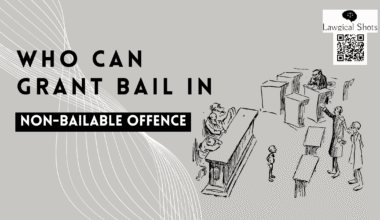Climate change refers to long-term alterations in Earth’s climate, particularly the rise in global temperatures and shifts in weather patterns. The Earth’s climate has changed throughout history. However, since the 1800s, human activities have been the main driver of climate change, primarily due to the burning of fossil fuels like coal, oil and gas. Burning fossil fuels generates greenhouse gas emissions that act like a blanket wrapped around the Earth, trapping the sun’s heat and raising temperatures.
Impact of Climate Change
Rising Global Temperatures (1.2°C Above Pre-Industrial Levels)
- According to United Nations, the Earth has already warmed by 1.2°C since the late 1800s, whereas the last decade was the warmest on record. In fact, each of the last four decades have been warmer than the previous ones since 1850, primarily due to greenhouse gas emissions (CO₂, methane, etc.).
- The Paris Agreement aims to limit warming to 1.5°C to avoid catastrophic effects, but current policies put us on track for ~3.1°C by the end of this century.
- Consequences: More heatwaves, droughts, disrupted agriculture, and health risks.
Extreme Weather Events
- Floods: Warmer air carries more moisture which leads to the heavier rainfall.
- Wildfires: Hotter, drier conditions fuel larger, more frequent fires (e.g., forest fire in Uttarakhand in 2016, 2020, 2021, 2023)
- cyclones: Nowadays, due to climate change, a frequent number of cyclones or hurricanes are hitting different parts of the world.
Biodiversity Loss & Ecosystem Collapse
- According to Global. Assessment Report on Biodiversity and Ecosystem Services IPBES 2019, more than 1 million species are facing extinction due to habitat loss, climate shifts, and pollution.
- According to NASA 95% of Coral reefs are dying from ocean warming and may lead to acidification by 2050 such as in Great Barrier Reef of Australia.
Rising Sea Levels Threatening Coastal Communities
- According to World Economic Forum there was expectation of rise in sea level by 0.43cm by 2024 but recorded a rise of 0.59cm.
- Seas have risen ~20 cm (8 inches) since 1900, accelerating due to melting ice (Greenland, Antarctica) and thermal expansion.
- By 2100, up to 1 meter of rise is possible, displacing 250+ million people (mostly in Asia, small island nations).
- Threats: Saltwater intrusion, flooded cities (e.g., Miami, Jakarta, Mumbai), loss of coastal ecosystems.
Legal Framework related to Climate Change
International Laws for Climate Change
Cooperation is required at the international level by all the countries in order to tackle the climate change. Several frameworks have been signed for the same, such as:
1. UNFCCC (United Nations Framework Convention on Climate Change)
The United Nations Framework Convention on Climate Change (UNFCCC) came into force on 21st March 1994 and was ratified by 195 nations, which became Parties to the Convention. It is the second of the three Rio Conventions approved at the 1992 Earth Summit, following the Convention on Biological Diversity and the Convention to Combat Desertification which also includes Ramsar Convention. The overall objective of the UNFCCC is to stabilize greenhouse gas concentrations to avoid injurious human activity on the climate. The first three Conferences of the Parties (COPs) took place in Berlin, Geneva and Kyoto, where the Kyoto Protocol was adopted.
2. Kyoto Protocol (1997)
The Kyoto Protocol was adopted in 1997 and came into effect in 2005.It was a significant effort to combat climate change worldwide. Kyoto Protocol holds the developed countries accountable in decreasing greenhouse gas emissions, as historically they had contributed the most. The Protocol established three flexible methods to help these countries fulfill their commitments more easily and cost-effectively: emissions trading, the Clean Development Mechanism, and joint implementation.
3. Paris Agreement (2015)
It was signed in 2016, and was the first global climate deal which aims to keep temperature rise below 2°C, ideally 1.5° for which each country must review their emission goals every 5 years. Developed nations are expected to provide finance for climate related actions to the developing countries. India’s NDC includes reducing emission intensity, increasing production of energy from non-fossils or renewable sources, and enhancing forest cover.
4. IPCC (Intergovernmental Panel on Climate Change)
It was established in 1988 by the World Meteorological Organisation (WMO) and the UN Environment Programme (UNEP) to study global warming. It is a UN body that checks the reason behind climate change and provides scientific reports to help policymakers understand its impacts, risks, and possible solutions. The IPCC also suggests ways to adapt and mitigate climate change. It works in close coordination with the UNFCCC, supporting its goals and actions.
India’s Climate Change Framework: National Policies & Institutions
India has also come up with several legal frameworks to deal with climate change, such as:
1. National Action Plan on Climate Change (NAPCC) – 2008
The National Action Plan on Climate Change (NAPCC), launched in 2008 aims to raise awareness on climate change and to promote common efforts to address it. It focuses of 8 core areas which are as follows:
- National Solar Mission
- National Mission for Enhanced Energy Efficiency
- National Mission on Sustainable Habitat
- National Water Mission
- National Mission for Sustaining the Himalayan Ecosystem
- National Mission for a Green India
- National Mission for Sustainable Agriculture
- National Mission on Strategic Knowledge for Climate Change.
2. State Action Plans on Climate Change (SAPCCs)
It allows States and UTs to come up with their own action plans to deal with the effects of climate change according to their environment, society, and economy, based on the goals of the National Action Plan on Climate Change (NAPCC), started in 2008.
3. Environment Protection Act (EPA), 1986
It was enacted under Article 253, and aims to protect and improve the environment across India. This Act empowers the Central Government to regulate pollution, set environmental standards, restrict industrial activities, appoint officers, etc. The Act prohibits excessive pollutant discharge and unsafe handling of hazardous substances.
However, this Act has been criticized due to the lack of public participation, and not covering modern pollution issues like noise and radiation.
4. National Green Tribunal (NGT) Act, 2010
The National Green Tribunal (NGT), established under the NGT Act, 2010, is a specialized body for speedy resolution of environmental cases. India is the third country to set up such a Tribunal. The NGT operates from five locations, with New Delhi as the principal seat. It consists of a Chairperson, Judicial, and Expert Members, appointed for three years. NGT handles civil cases related to environmental protection, guided by natural justice and key environmental principles. It can award compensation, restore damaged environments, and impose penalties. Appeals against NGT decisions lie with the Supreme Court. It covers seven major environmental laws in India.
Survey Reports on Climate Change
1. IPCC Sixth Assessment Report (AR6, 2021-2023)
According to IPCC report, global warming has already reached 1.2°C above from the pre-industrial levels where CO₂ concentrations was at its highest in 2 million years (around 420 ppm). Climate change has extreme weather events, leading to more frequent and severe heatwaves, floods, and droughts worldwide.
2. World Bank’s “Climate Breakdown” Report (2022)
According to Groundswell report, Climate Change can displace up to 216 million people within their countries by 2050. Regions like Sub-Saharan Africa, South Asia, and Latin America will be the worst affected areas due to sea-level rise, water scarcity, crop failures, etc.
3. UNEP Emissions Gap Report (Annual)
The 2023 Broken Record report shows that current climate promises are not enough to meet the Paris Agreement goals. If things continue as they are, the world could heat up by 2.8°C by 2100. To stay below 1.5°C, global emissions must be cut by 28–42% by 2030. Big changes are needed in energy, farming, and industries to make this happen.
Judicial Precedents on Climate Change
Virender Gaur v. State of Haryana (1995)
In this case, the Supreme Court of India held that the Right to Life also includes the right to live in a clean and healthy environment as per Article 21 of the Constitution. The matter was related to garbage being dumped in the residential area, which was injurious for the health of residents. Court also held that protecting the environment is important to human health and well-being, and instructed the Government to act quick to prevent pollution so it does not harm the environment.
Indian Council for Enviro-Legal Action v. Union of India (1996)
Also known as the Bichhri case, the Supreme Court of India established the “Polluter Pays principle“. The case was on chemical factories at Bichhri, Rajasthan which had disposed poisonous waste in land and water which caused severe damage to the environment and local citizens. The court held that polluting companies will have to pay for its cleansing and compensation for the people who were harmed. The court emphasized that in order to achieve sustainable development, the polluter should be held responsible not the public.
M.C. Mehta v. Union of India (1998)
Also known as Vehicular Pollution Case, the Supreme Court in this case addressed the air pollution caused by vehicles in Delhi. The case was brought by environmentalist M.C. Mehta, who sought action to minimize the ill effects of vehicle emissions on health and the environment. The Court acknowledged the need to address pollution and issued a number of guidelines to minimise the orders. One of the most crucial choices was to get Delhi’s public transport, in particular buses, to convert to Compressed Natural Gas (CNG), which is less polluting than petrol and diesel. This conversion was meant to reduce pollution and enhance air quality in Delhi.
T.N. Godavarman Thirumulpad v. Union of India (1996)
The Supreme Court of India made strong efforts to conserve forests and prevent uncontrolled deforestation. The case, brought by environmentalist T.N. Godavarman Thirumulpad, sought to prevent harm to forest due to illegal operations such as logging and minning. The Court made a number of significant guidelines to conserve forests throughout India. One of the major orders was that the land in the forest would not be employed for purposes such as mining or construction without consent from the Ministry of Environment and Forests. This case greatly contributed to reinforcing forest conservation legislation and ensured authorities are answerable for forest protection. It continues to affect policy and legislation regarding forest protection in India.
The legal frameworks for climate change have been compiled by our intern, Mr. Shubham Chandrakar. He joined the team to assist and bring informational legal blogs.








